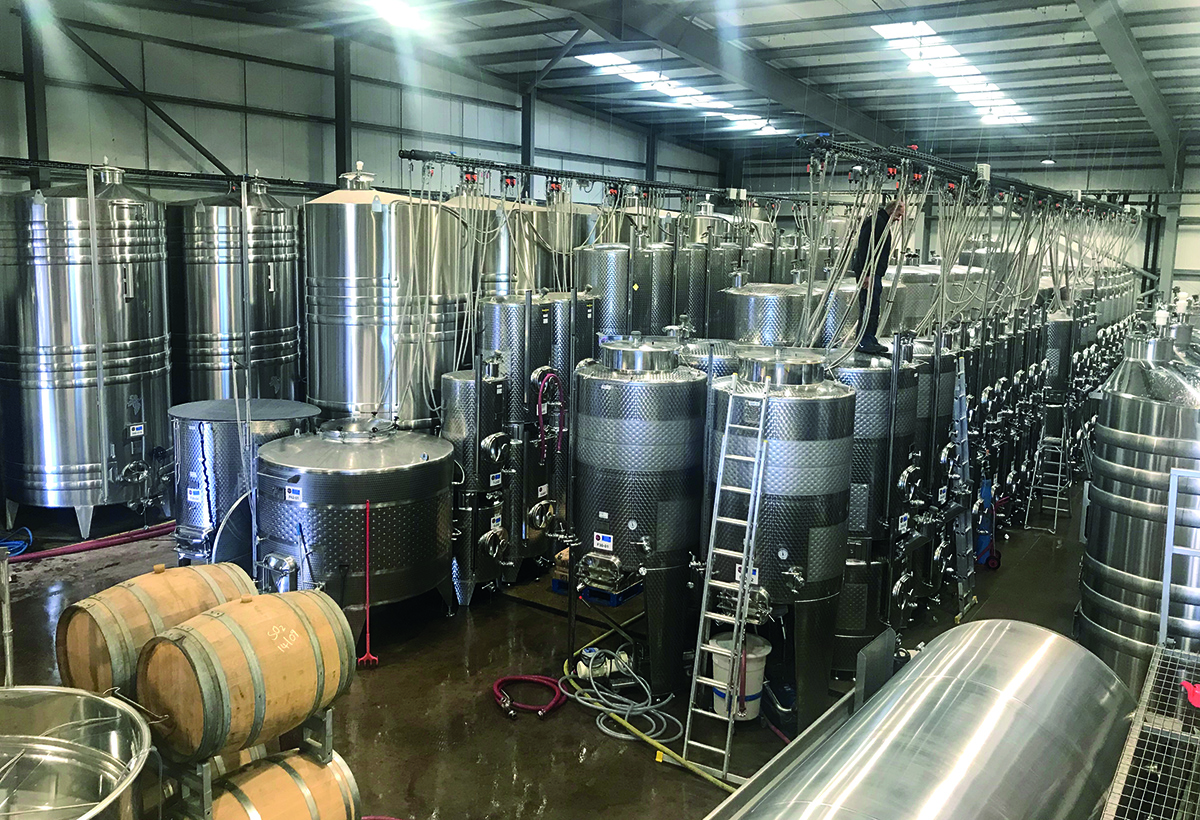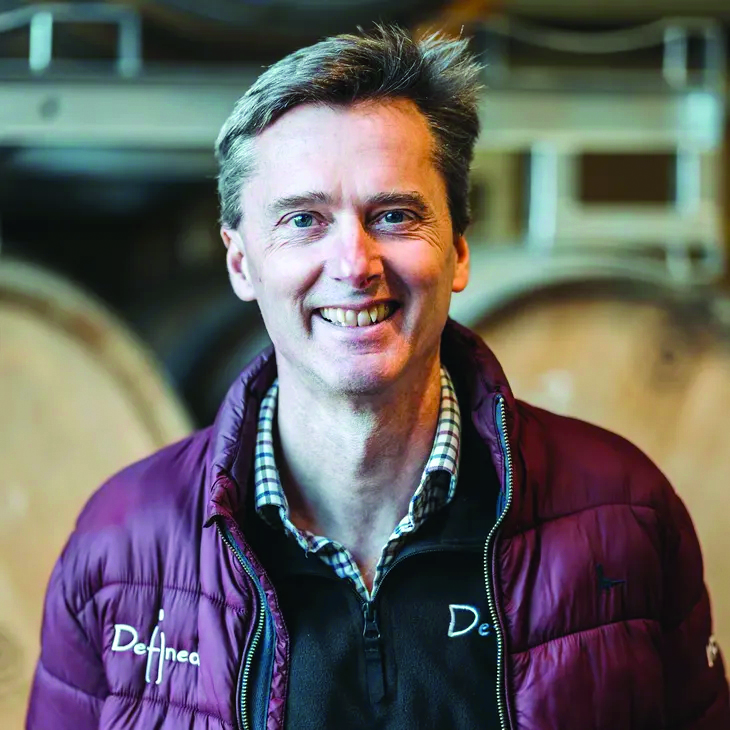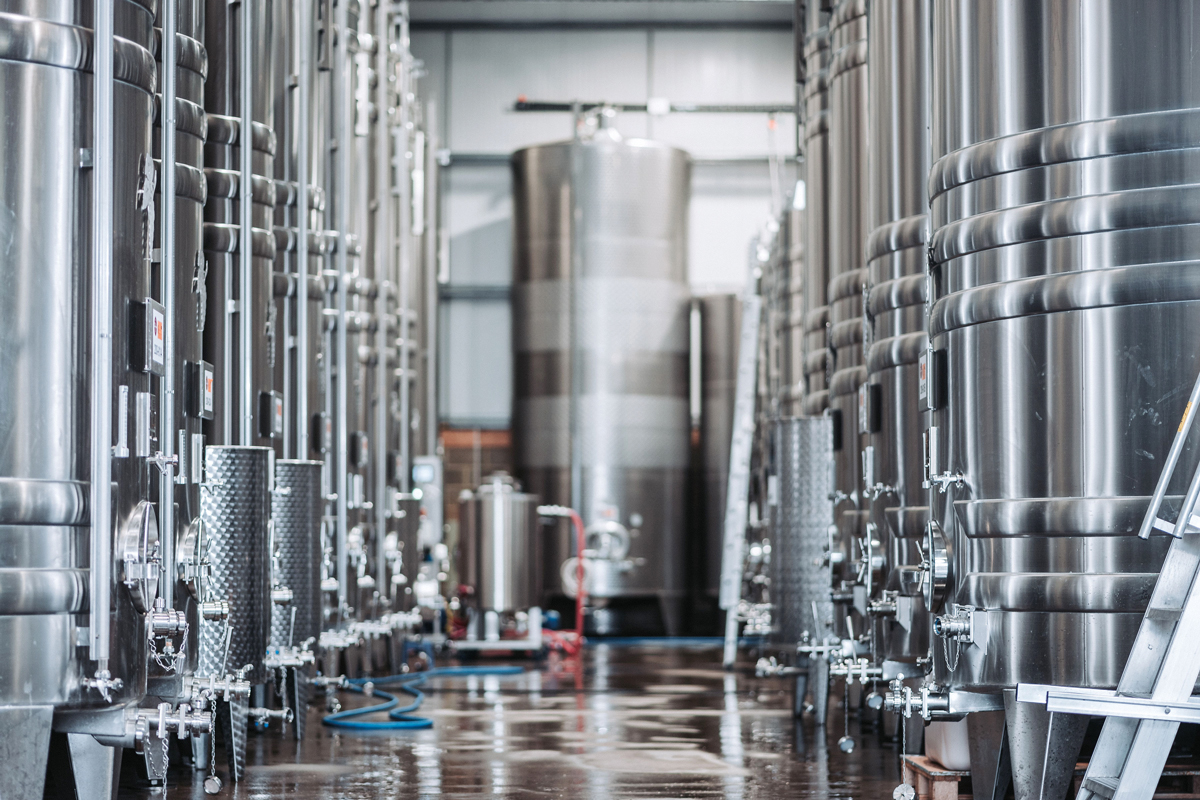The dos and don’ts of health and safety in the winery
26th October 2023
Within wineries there are numerous health and safety hazards that require careful management to protect staff and minimise the risk of injury. Following the recent tragic death of Italian winemaker Marco Bettolini, who was overcome by toxic fumes while attempting to rescue a colleague, Fruit & Vine spoke to Defined Wine CEO Henry Sugden who offered some advice.

The death of Marco Bettolini, winemaker at the Ca’ di Rajo winery, Treviso, highlighted the dangers of working in confined spaces where large quantities of toxic odourless gases – such as carbon monoxide and nitrogen – are produced, for example in wine fermentation vats.
Carbon dioxide (CO2) poisoning is the number one health risk associated with wineries, particularly where red wine is being fermented, according to Henry Sugden, founder and CEO of contract winery Defined Wine.

Defined Wine CEO Henry Sugden.
Henry explained that CO2 monitors inside wineries are essential to alert employees when levels are too high. “Once wines are fermenting in the tank, they’ll be releasing CO2 into the winery. To manage this we have protocols for opening up the door, with remote access, so that if you see the CO2 device is alarming, you can open the doors from the outside in order to increase airflow.” They also have extractor fans to move the toxic gas out of the winery environment.
There are protocols in place for entering confined spaces where there may be a CO2 risk, which Henry said is mainly tanks where red wine is being fermented, and employees have handheld portable monitors for checking tanks and presses before entering them.
“In England we make less red wine, and it tends to be quite small batches, so the tanks and bins are small enough that we don’t normally have to get in and clean them, so that again is reducing the risk. The bigger concern is wineries with huge red wine vats or fermentation vessels that workers have to enter to clean, and there’s still a lot of CO2 in there,” he added.
Key hazards and mitigation strategies
Having adequate health and safety protocols in place to reduce risks and making sure these are followed is an important part of protecting a winery’s greatest asset – its people.
According to ‘A recipe for safety’, a publication by the Health and Safety Executive (HSE) offering guidance on the main health and safety hazards in the food and drink industries, 96% of all injuries and occupational ill health in the workplace result from the following:
- Machinery
- Workplace transport
- Work at height
- Entry into silos and confined spaces
- Slips and trips
- Struck by objects and knives
- Manual handling
- Upper limb disorders
- Occupational dermatitis
- Occupational asthma
- Noise-induced hearing loss
- Work-related stress.
Therefore, reducing risks from these 12 key hazards will go a long way towards minimising injuries, ill health and associated costs in wineries.
Working at heights – At Defined Wine, Henry considers working at heights the second greatest risk to employees, who are sometimes required to climb tall ladders or alternatively use pulley systems to move things around.
“We have a number of different ways to try and make sure that we can work safely at heights where we need to in exceptional circumstances,” he said. For tanks without a catwalk, this includes using a pulley system, so that additions can be taken safely to the top of the tank rather than being carried up a ladder.
Some of the ways to mitigate the risk of injury when using ladders include training staff to use the ladders correctly, checking for defects such as broken rungs or feet, and ensuring the rungs are clean and dry before using the ladder.
Forklifts – Another major risk is operating forklifts, which can roll over and crush workers. Law dictates that forklifts can only be operated by trained personnel who must follow the recommended safety guidelines at all times. Keeping training records ensures that everyone is kept up-to-date and issuing a key only to trained users stops others from using forklifts.
Trips, slips and sharp objects – Trips and slips are a hazard in most workplaces, and can be prevented by cleaning up spills immediately. Wine cellars should be checked for leaks regularly, and any clutter cleared away from walkways that could lead to a sprain, fracture or even a head injury.
“Glass is a hazard that’s quite specific to making sparkling wine, as the bottles are under pressure,” Henry explained. “So, when the guys are handling sparkling wine, when they’re disgorging and labelling, they wear glasses and gloves as protection.”
Employers must ensure that PPE is available to all staff who need it, and that training is provided in the proper use of any relevant PPE.

‘The bigger concern is wineries with huge red wine vats or fermentation vessels that workers have to enter to clean, and there’s still a lot of CO2 in there.’
Noise – Noise can also pose a hazard in areas such as bottling and disgorging lines, where it may reach harmful levels and cause gradual hearing loss over time.
“We have a decibel meter, so we can check the levels of noise that people are working at, and then we have spare ear protection as well,” Henry said.
Workers can reduce the risk of hearing loss by wearing approved ear protection when entering an area with signs warning of high noise levels, whether or not it is noisy at the time.
Other hazards – Other hazards to consider in wineries include:
- Overexertion (back injuries)
- Unguarded machinery
- Machinery starting up unexpectedly
- Chemical exposure
- Flammable glasses or vapours
- Lone working.
As most wineries are considered moderate-risk workplaces, having first aid kits and personnel with up-to-date first aid training on site is highly recommended to reduce the severity of work-related injuries, and all staff should be made aware of where kits are and how to get hold of a first aider.
Risk assessments
By law, employers are required to identify risks in the workplace and take reasonable action to protect workers and visitors from harm. According to HSE, the minimum requirement for employers is as follows:
- Identify what could cause injury or illness in your business (hazards)
- Decide how likely it is that someone could be harmed and how seriously (the risk)
- Take action to eliminate the hazard, or control the risk.
When a business employs five or more people, records of risk assessments must also be kept with details of any vulnerable employees such as older, younger, pregnant or disabled members of staff.
